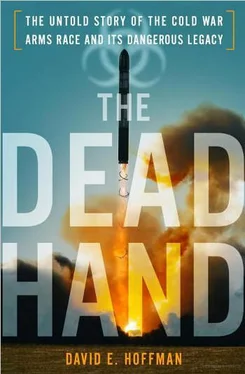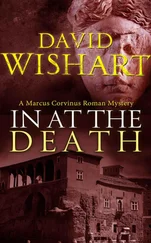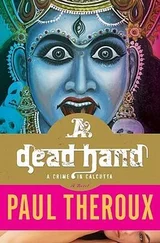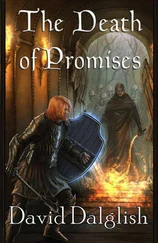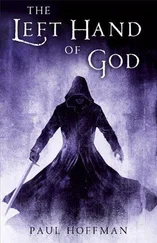Tolkachev had already been arrested. He was later executed.
On the same day Stombaugh was seized outside of Tolkachev’s apartment in Moscow, the CIA’s Soviet operations suffered another devastating setback in Washington. Ames arrived at a small restaurant, Chadwicks, located on the Georgetown waterfront. Ames had wrapped up five to seven pounds of classified messages in his CIA office and carried them out of the headquarters building in Langley without being stopped.
Ames carried the documents into the restaurant in a plastic bag. He was met there by Chuvakhin from the Soviet Embassy, and Ames gave him the bag. It held the largest batch of sensitive documents and critical information ever turned over to the KGB in a single meeting. Ames identified more than ten top-level CIA and FBI sources who were then reporting on Soviet activities. Among them were Gordievsky and Tolkachev. If the KGB had earlier been suspicious about them, they now had proof.
Two days after Ames gave away the bag filled with secrets, Gordievsky, still fearful and uncertain, went to a KGB sanatorium outside of Moscow. He was told to wait there while the KGB decided his fate. Gordievsky’s family was safely headed to their summer vacation in Azerbaijan. Despite the risks, Gordievsky decided to escape. He returned to his apartment in Moscow and retrieved from his bookshelf an English novel that had his exfiltration instructions on a cellophane sheet under the flyleaf.
The instructions were: signal to the British that he had a message, and then meet a British agent in a “brush by” encounter that would be unobtrusive. Frantic, Gordievsky gave the signal that he had a message. Then he went to Red Square, crowded with tourists. He went into the men’s room at Lenin’s tomb, closed the door to the stall and wrote a note to the British. “AM UNDER STRONG SUSPICION AND IN BAD TROUBLE. NEED EXFILTRATION SOONEST. BEWARE OF RADIOACTIVE DUST AND CAR ACCIDENTS.” The last line referred to common KGB methods for following people or eliminating them. Gordievsky failed to deliver the note—he couldn’t find the agent.
At the next assigned meeting, he was looking for someone who would have an unmistakable British look, and would acknowledge having spotted Gordievsky by chewing something. After twenty-four minutes of waiting on a designated street corner, Gordievsky noticed a man with a British appearance carrying a dark-green Harrods bag and eating a Mars candy bar. “I gazed into his eyes shouting silently, ‘Yes! It’s me! I need urgent help!’”
Gordievsky then took a train to Leningrad and a bus almost all the way to the border with Finland. Thatcher approved a daring plan to whisk him away from the Soviet Union. Gordievsky said he was picked up by British agents in a forested area near the border and driven out in the trunk of a car. Passing through checkpoints, he cowered inside the trunk, but it was not opened by Soviet guards. When the lid finally popped open once safely in Finland, Gordievsky recalled, “I saw blue sky, white clouds and pine trees above me.” Thanks to his British handlers, he had escaped. “I had outwitted the entire might of the KGB! I was out! I was safe! I was free!” 23For a while, however, the British kept to themselves the news of their triumph.
On August 1, in Rome, Vitaly Yurchenko, forty-nine, a beefy KGB official who had recently been named deputy director of the department that ran spies in the United States and Canada, went for a walk and never came back. He called the U.S. Embassy, said he wanted to defect to the United States and in a matter of days was flown back to Andrews Air Force Base, in suburban Maryland, outside of Washington. Yurchenko had previously spent five years in KGB counterintelligence.
To meet Yurchenko at the airport, the CIA assigned several people, among them its own top Soviet counterintelligence expert, Ames. However, Ames was late arriving at Andrews, and his behavior was odd. When he saw Yurchenko, in a crowd of CIA and FBI officials, Ames went right up to him and delivered a pompous greeting: “Colonel Yurchenko, I welcome you to the United States on behalf of the President of the United States.” Bearden speculates that Ames did this because he was afraid Yurchenko might already know he was working for the KGB. Ames then sat in the car with Yurchenko as the defector was driven to a townhouse in Oakton, in the northern Virginia suburbs, for debriefing. 24
The debriefings were, in retrospect, one of the most bizarre chapters in the Cold War. Ames had just recently given the KGB the largest dump of secrets in the CIA’s history. He was sitting across the table and debriefing one of the most significant defectors ever to come offering the KGB’s secrets to the United States. The details Yurchenko told them were then being transmitted by Ames back to the KGB, and the CIA didn’t know it.
Yurchenko made two stunning disclosures. The first was that a former CIA trainee was selling secrets to the Soviets. Yurchenko said he knew the contact only by his KGB code name, “Robert,” and one identifying characteristic: he had been slated to go to Moscow but did not. A thunderbolt hit the CIA. The description could only fit a disgruntled trainee they had fired in 1983, Edward Lee Howard. 25Then came a second bombshell. The KGB, he recalled, harvested a rich crop of secrets from a walk-in to the Soviet Embassy in 1980, an employee of the National Security Agency, which ran American global electronic eavesdropping. Yurchenko said he only knew of this agent as “Mr. Long,” and gave his debriefers some details. He said Mr. Long sold to the Soviets the details of the U.S. operation to tap the Soviet undersea cables in the Sea of Okhotsk. This was the monitoring operation known as Ivy Bells, which had been discovered and removed by the Soviets in 1981. (A second undersea cable-tapping operation in the Barents Sea had not been compromised.) The FBI launched a manhunt for Mr. Long, and four months later arrested Ronald Pelton, a communications specialist with the NSA who sold the classified data to the Soviets for $35,000.
Casey, the CIA director, took huge delight in the Yurchenko defection. “Casey was like a child with a new toy with Yurchenko,” Gates said. “Not only was he eager to hear, virtually on a daily basis, about the debriefings: he also could not help bragging about this great CIA coup. He met with Yurchenko, had dinner with him, couldn’t get enough of him.” 26
On October 1, 1985, Robert Hanssen, an FBI analyst on Soviet intelligence, dropped a letter into a mailbox in Prince George’s County, outside of Washington. Hanssen was based in the New York office but was working that day in the capital. The letter was addressed to the home of a KGB operative, Viktor Degtyar, who lived in Alexandria, Virginia. The letter arrived October 4. Inside an outer envelope was a second envelope that Hanssen marked “DO NOT OPEN. TAKE THIS ENVELOPE UNOPENED TO VICTOR I. CHERKASHIN.” The KGB man took the letter to Cherkashin, the second-ranking KGB official in Washington at the time, who was already running Ames.
When Cherkashin opened it, he found a second letter:
DEAR MR. CHERKASHIN,
SOON, I WILL SEND A BOX OF DOCUMENTS TO MR. DEGTYAR.
THEY ARE FROM CERTAIN OF THE MOST SENSITIVE AND HIGHLY COMPARTMENTED PROJECTS OF THE U.S. INTELLIGENCE COMMUNITY. ALL ARE ORIGINALS TO AID IN VERIFYING THEIR AUTHENTICITY. PLEASE RECOGNIZE FOR OUR LONG-TERM INTERESTS THAT THERE ARE A LIMITED NUMBER OF PERSONS WITH THIS ARRAY OF CLEARANCES. AS A COLLECTION THEY POINT TO ME. I TRUST THAT AN OFFICER OF YOUR EXPERIENCE WILL HANDLE THEM APPROPRIATELY. I BELIEVE THEY ARE SUFFICIENT TO JUSTIFY A $100,000 PAYMENT TO ME.
I MUST WARN YOU OF CERTAIN RISKS TO MY SECURITY OF WHICH YOU MAY NOT BE AWARE. YOUR SERVICE HAS RECENTLY SUFFERED SOME SETBACKS. I WARN THAT MR. BORIS YUSHIN (LINE PR, SF), MR. SERGEY MOTORIN (LINE PR, WASH.) AND MR. VALERIY MARTYNOV (LINE X, WASH.) HAVE BEEN RECRUITED BY OUR “SPECIAL SERVICES.” 27
Читать дальше
